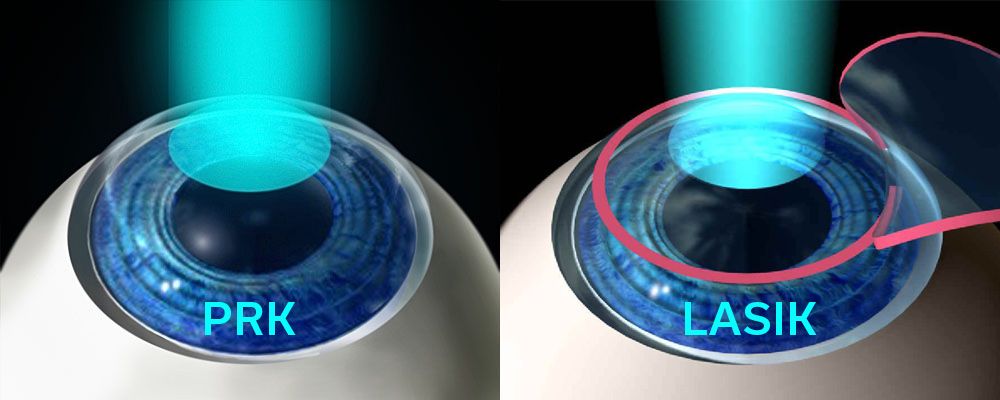There are different treatment methods preferred to eliminate visual defects with laser eye surgery. In fact, the main focus and goal is the same. The focus in each method is to improve the patient’s vision and to ensure the patient’s recovery as soon as possible. This is also the case for PRK and LASIK methods. So what are the differences in which method? Which method is more advantageous? PRK or LASIK?
PRK or LASIK?
PRK (Photorefractive Keratectomy) and LASIK (Laser-Assisted In Situ Keratomileusis) are both methods used to correct visual defects with laser eye surgery. Which one is more advantageous may vary depending on the individual’s eye structure, lifestyle and personal preference. Let’s try to better understand the advantages and disadvantages between the two methods.
LASIK Advantages:
- Fast Recovery Time: After LASIK surgery, patients can usually see more clearly within 24 hours and can quickly return to their daily activities.
- Less Discomfort: There is less pain or discomfort during the healing process compared to PRK.
- Corneal Layer is Preserved: In LASIK, a corneal flap is created and the laser is applied under this flap. In this way, the upper layer of the cornea is less affected.
Disadvantages of LASIK
- Flap Complications: In LASIK, a flap is created on the cornea. Complications related to this flap (slippage, fracture or infection) may occur. However, thanks to today’s technologies (Femtosecond Laser), these complications are almost negligible.
- Patients with Thin Corneas: People with very thin corneas may not be suitable for LASIK because sufficient thickness is required for flap creation.
PRK Advantages
- Suitable for Patients with Thin Corneas: PRK can be preferred for patients with thin corneas or whose corneal structure is not suitable for LASIK. Since no flap is created, corneal thickness is not of great importance.
- Safer Cornea: Since the flap is not removed in PRK, the structural integrity of the cornea is less compromised. This may be preferred especially in individuals prone to eye trauma.
- Less Flap Complications: Since there is no flap, flap-related complications that can be seen in LASIK, albeit in low probabilities, are not seen in PRK.

PRK Disadvantages:
- Long Recovery Time: Recovery time after PRK is longer than LASIK. Clarity of vision may take several weeks and there may be discomfort for the first few days.
- More Discomfort: Complaints such as burning, stinging and sensitivity to light are more pronounced after PRK. Therefore, the healing process is a little more challenging.
- Protection of the Eye Surface during the Healing Period: During the healing process, the surface of the cornea is tried to be protected and the patient can use temporary bandage contact lenses.
In Which Case Which Method Should Be Preferred?
- Those with thin or irregular cornea: PRK is generally preferred. Because corneal thickness may not be sufficient to create a flap in LASIK.
- Those who want a quick recovery: LASIK is suitable for individuals who want to return to daily life more quickly, as the recovery time is much faster.
- Those with Low Pain Threshold: LASIK is more comfortable in terms of pain and discomfort after the procedure.
Both methods are effective in correcting visual defects such as myopia, hyperopia and astigmatism. However, a detailed eye examination and a doctor’s recommendation are important to determine who is more suitable for which method. An eye surgeon can recommend the most appropriate method by evaluating the thickness of the cornea, lifestyle, age and other individual factors.






